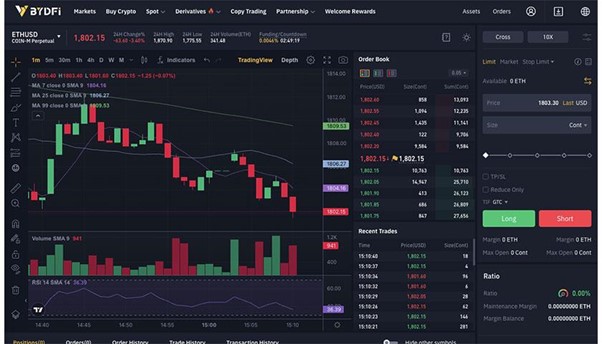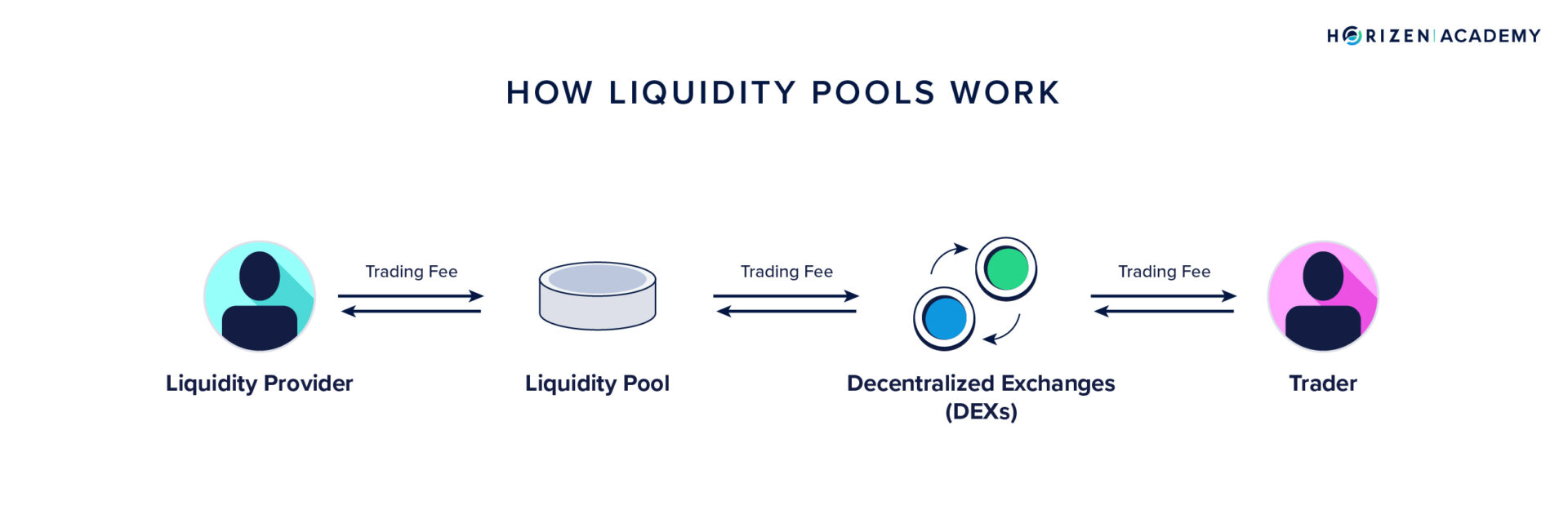Did you know that the first transaction in Bitcoin was for two pizzas worth 10,000 BTC? Talk about a slice of regret! In this article, we delve into the world of Decentralized Finance (DeFi) and its growing appeal for day traders. We'll clarify what DeFi is and how it revolutionizes day trading. You’ll learn about the benefits and risks associated with trading in this space, as well as the essential steps to get started. We’ll highlight the best DeFi platforms, tools for analysis, and how liquidity pools and gas fees play a role. Additionally, discover effective strategies, common pitfalls to avoid, and how to stay informed on market trends. Whether you're a seasoned trader or a newbie, DayTradingBusiness is here to equip you with the knowledge you need to navigate DeFi successfully.
What is Decentralized Finance (DeFi) in Day Trading?
Decentralized Finance (DeFi) in day trading refers to using blockchain technology and smart contracts to trade assets without intermediaries like banks or brokers. It enables traders to access financial services directly through decentralized platforms, allowing for quicker transactions and lower fees. Traders can use DeFi protocols to provide liquidity, borrow assets, or leverage trades. Key benefits include transparency, control over funds, and the ability to trade 24/7. Popular DeFi platforms for day trading include Uniswap and Aave.
How Does Day Trading Work in DeFi?
Day trading in DeFi involves buying and selling cryptocurrencies or tokens within the same trading day to capitalize on price fluctuations. Traders use decentralized exchanges (DEXs) to execute trades without intermediaries, relying on liquidity pools for transactions.
To start, you connect a cryptocurrency wallet to a DEX, then monitor price charts and market trends. Traders often employ strategies like arbitrage, where they exploit price differences between platforms, or technical analysis to predict movements.
Risk management is crucial; traders set stop-loss orders to limit potential losses. Finally, successful day trading in DeFi requires staying updated on market news and trends, as the fast-paced nature can lead to quick gains or losses.
What Are the Benefits of Day Trading in DeFi?
Day trading in DeFi offers several benefits:
1. High Volatility: DeFi assets often experience significant price swings, providing opportunities for quick profits.
2. Decentralization: No intermediaries mean you control your funds and trades directly, enhancing security and transparency.
3. 24/7 Market Access: Unlike traditional markets, DeFi operates around the clock, allowing you to trade at any time.
4. Diverse Asset Options: A wide range of tokens and liquidity pools lets you choose from numerous trading opportunities.
5. Low Fees: Many DeFi platforms offer lower transaction fees compared to centralized exchanges.
6. Yield Farming Opportunities: You can earn additional returns on your investments through yield farming while day trading.
7. Innovative Trading Tools: Access to advanced tools and analytics specifically designed for DeFi enhances trading strategies.
These factors make day trading in DeFi an attractive option for traders looking to capitalize on the fast-paced world of decentralized finance.
What Risks Should I Consider in DeFi Day Trading?
In DeFi day trading, consider these risks:
1. Smart Contract Vulnerabilities: Bugs in code can lead to hacks or loss of funds.
2. Market Volatility: Prices can swing wildly, increasing the risk of losses.
3. Liquidity Issues: Low liquidity can make it hard to execute trades without slippage.
4. Regulatory Uncertainty: Changing regulations can impact trading activities and access.
5. Impermanent Loss: Providing liquidity can result in losses compared to holding assets.
6. Rug Pulls: Projects may disappear with investors' funds, especially in new tokens.
7. High Fees: Network congestion can lead to high transaction costs during trading.
8. Limited Information: Lack of reliable data can lead to poor trading decisions.
Stay aware of these factors to navigate DeFi day trading effectively.
How Do I Start Day Trading in DeFi?
To start day trading in DeFi, follow these steps:
1. Choose a DeFi Platform: Select a decentralized exchange (DEX) like Uniswap or SushiSwap. Ensure it supports the tokens you want to trade.
2. Set Up a Wallet: Create a crypto wallet like MetaMask or Trust Wallet to hold your assets. Connect it to your chosen DEX.
3. Acquire Cryptocurrency: Buy Ethereum or stablecoins on a centralized exchange, then transfer them to your wallet.
4. Learn Trading Strategies: Familiarize yourself with strategies like scalping or trend following. Study market trends and price action.
5. Practice with Small Trades: Start with minimal investments to understand market movements and refine your strategies without significant risk.
6. Monitor Gas Fees: Be aware of transaction fees on the Ethereum network, as they can impact your profits.
7. Stay Informed: Follow DeFi news, join communities on platforms like Discord or Twitter, and keep up with market sentiment.
8. Use Analytics Tools: Leverage tools like Dune Analytics or DeFi Pulse to analyze market trends and make informed decisions.
By following these steps, you can effectively start day trading in DeFi.
Which DeFi Platforms Are Best for Day Trading?

The best DeFi platforms for day trading include Uniswap, SushiSwap, and PancakeSwap. Uniswap offers high liquidity and a user-friendly interface. SushiSwap provides additional features like yield farming and staking. PancakeSwap, popular on Binance Smart Chain, has lower fees and faster transactions. Other notable mentions are dYdX for advanced trading options and Curve Finance for stablecoin swaps.
How Can I Analyze DeFi Assets for Day Trading?
To analyze DeFi assets for day trading, focus on these key steps:
1. Market Trends: Monitor price charts and patterns using tools like TradingView to identify trends and volatility.
2. Liquidity: Check the liquidity of assets on decentralized exchanges (DEXs). Higher liquidity often means less slippage.
3. Fundamental Analysis: Evaluate the project’s fundamentals—team, technology, use case, and community engagement. Strong projects tend to have more stable prices.
4. Technical Indicators: Use indicators like RSI, MACD, and moving averages to pinpoint entry and exit points.
5. News and Sentiment: Stay updated on news affecting DeFi and crypto markets. Social media platforms can provide insights into market sentiment.
6. Smart Contract Audits: Ensure the assets are backed by audited smart contracts to mitigate risks associated with vulnerabilities.
7. Risk Management: Set stop-loss orders and position sizes to protect your capital.
By combining these strategies, you can effectively analyze DeFi assets for day trading.
What Tools Are Available for DeFi Day Traders?
DeFi day traders can utilize several tools, including:
1. Decentralized Exchanges (DEXs): Platforms like Uniswap, SushiSwap, and PancakeSwap allow for direct trading of cryptocurrencies without intermediaries.
2. Portfolio Trackers: Tools like Zapper and DeBank help monitor asset performance and manage multiple wallets.
3. Analytics Platforms: DeFi Pulse and Dune Analytics provide insights into market trends and liquidity.
4. Trading Bots: Services like 3Commas or Hummingbot automate trading strategies.
5. Price Alerts: Apps like CoinGecko and Blockfolio notify traders of price changes or market movements.
6. Slippage Calculators: Tools that help assess potential price impacts during trades, crucial for executing profitable trades.
7. Gas Fee Trackers: Websites like EthGasStation provide real-time gas prices to optimize transaction costs.
Using these tools effectively can enhance trading efficiency and decision-making in the DeFi space.
How Can I Choose the Best Crypto Markets for Day Trading in Decentralized Finance (DeFi)?
To choose the best crypto markets for day trading, consider liquidity, volatility, trading fees, and user interface. Look for platforms with high trading volumes and tight spreads, as well as low fees to maximize profits. Additionally, ensure the exchange offers a variety of trading pairs and robust security features. For decentralized finance (DeFi) day trading, focus on platforms with high transaction speeds and reliable smart contracts.
Learn more about: How to Choose the Best Crypto Markets for Day Trading
How Do Liquidity Pools Work in DeFi Trading?

Liquidity pools in DeFi trading are collections of funds locked in smart contracts that facilitate trading on decentralized exchanges (DEXs). Users provide liquidity by depositing tokens into these pools, earning fees in return. When traders swap tokens, the pool's algorithm adjusts prices based on supply and demand, ensuring liquidity for buyers and sellers. This system eliminates the need for traditional order books, enabling instant trades. Additionally, liquidity providers face impermanent loss, which is a risk to consider. Overall, liquidity pools enhance trading efficiency and accessibility in the DeFi space.
What Are Gas Fees and How Do They Impact DeFi Day Trading?
Gas fees are transaction costs paid to miners on a blockchain network, primarily Ethereum. They compensate for the computational power needed to validate and process transactions. In DeFi day trading, high gas fees can significantly impact profitability by eating into gains, especially during periods of network congestion. Traders might face delays or need to adjust strategies based on gas prices, influencing when and how they execute trades. Lower gas fees can enhance trading efficiency, while high fees can deter frequent transactions.
How Can I Manage Risks in DeFi Day Trading?
To manage risks in DeFi day trading, follow these strategies:
1. Diversify Investments: Don’t put all your funds into one asset. Spread your capital across multiple tokens or platforms.
2. Set Stop-Loss Orders: Use stop-loss features to limit potential losses on trades, ensuring you exit at predetermined levels.
3. Understand Market Conditions: Stay updated on market trends and news that could impact asset prices. Use technical analysis for better predictions.
4. Limit Leverage: Avoid using high leverage, as it can amplify losses. Stick to lower leverage ratios to manage risk effectively.
5. Use Reputable Platforms: Trade on established DeFi platforms with a good security track record to reduce the risk of hacks or scams.
6. Practice Risk Management: Determine how much of your portfolio you’re willing to risk on any single trade and stick to that limit.
7. Stay Calm: Emotional trading can lead to poor decisions. Stick to your strategy and avoid making impulsive trades based on fear or greed.
8. Continuous Learning: Keep educating yourself on DeFi developments and trading strategies to adapt to changing market conditions.
Implementing these strategies will help you navigate the risks associated with DeFi day trading.
What Strategies Are Effective for Day Trading in DeFi?
Effective strategies for day trading in DeFi include:
1. Technical Analysis: Use charts and indicators like moving averages and RSI to identify trends and entry/exit points.
2. Liquidity Pools: Participate in liquidity pools to earn fees while trading tokens with high volume and low slippage.
3. Arbitrage Opportunities: Exploit price differences across various decentralized exchanges (DEXs) for quick profits.
4. Yield Farming: Combine trading with yield farming to maximize returns on your assets while maintaining liquidity.
5. Risk Management: Set strict stop-loss orders and only risk a small percentage of your capital on each trade.
6. Stay Informed: Keep up with DeFi news and protocol updates to anticipate market movements.
7. Automated Trading Bots: Use bots to execute trades based on predefined strategies, ensuring timely responses to market changes.
8. Diversification: Spread investments across different DeFi projects to minimize risk while maximizing potential returns.
Learn about Effective Day Trading Strategies for Short-Term Success
How Does Market Volatility Affect DeFi Day Trading?

Market volatility significantly impacts DeFi day trading by creating opportunities and risks. High volatility can lead to rapid price swings, allowing traders to capitalize on quick gains. However, it also increases the risk of substantial losses if trades go against expectations. Liquidity can be affected as well; during volatile periods, price slippage may occur, making it harder to execute trades at desired levels. Additionally, sudden changes in asset prices can trigger automated trading strategies or liquidations, further amplifying market movements. Thus, while volatility can enhance profit potential, it also demands careful risk management in DeFi day trading.
What Are Common Mistakes to Avoid in DeFi Day Trading?
1. Ignoring Research: Failing to analyze projects can lead to poor investment choices. Always study the fundamentals of the tokens you trade.
2. Overleveraging: Using excessive leverage can amplify losses. Stick to manageable leverage to protect your capital.
3. Lack of Strategy: Trading without a clear plan increases the risk of emotional decisions. Set entry and exit points beforehand.
4. Not Monitoring Gas Fees: High transaction fees can erode profits. Always factor in gas costs when trading on DeFi platforms.
5. Chasing Losses: Trying to recover losses quickly often leads to bigger losses. Stay disciplined and stick to your strategy.
6. Relying on Hype: Following trends without due diligence can be detrimental. Base trades on research, not market noise.
7. Neglecting Security: Failing to secure wallets and private keys can result in hacks. Use reputable wallets and enable two-factor authentication.
8. Ignoring Market Conditions: Not considering broader market trends can mislead trades. Stay aware of market sentiment and macroeconomic factors.
Learn about Common Mistakes in Day Trading Scalping and How to Avoid Them
How Can I Stay Updated on DeFi Market Trends for Day Trading?
Follow these steps to stay updated on DeFi market trends for day trading:
1. Twitter and Telegram: Follow key influencers and join DeFi-focused groups for real-time insights.
2. News Aggregators: Use platforms like DeFi Pulse or CoinDesk to track the latest developments.
3. DeFi Analytics Tools: Utilize tools like Dune Analytics or DeFiLlama to monitor on-chain data and trends.
4. Discord Communities: Engage in Discord servers dedicated to DeFi trading for discussions and alerts.
5. Subreddits: Participate in relevant subreddits like r/DeFi and r/CryptoCurrency for community insights.
6. Market Alerts: Set up alerts on platforms like TradingView for specific tokens and price movements.
7. Podcasts and YouTube: Listen to DeFi-focused podcasts and watch YouTube channels for expert opinions and market analysis.
Stay active and engaged to keep your finger on the pulse of the DeFi market.
Learn about How to Stay Updated on Crypto Market News for Day Trading
What Regulations Should I Be Aware of in DeFi Day Trading?
Be aware of regulations like AML (Anti-Money Laundering) and KYC (Know Your Customer) requirements, which may apply depending on your jurisdiction. Understand the SEC's stance on securities, as some DeFi tokens could be classified as such. Tax implications from capital gains also matter—report your earnings accurately. Additionally, stay informed about local cryptocurrency laws and any exchange-specific regulations.
Conclusion about Exploring Decentralized Finance (DeFi) for Day Trading
In summary, decentralized finance (DeFi) offers a unique landscape for day trading, characterized by innovative platforms and diverse assets. While the benefits, such as increased accessibility and potential for high returns, are enticing, traders must navigate risks like market volatility and gas fees. To succeed, it’s crucial to utilize effective strategies, remain informed about market trends, and choose the right tools. For those looking to delve deeper into DeFi day trading, DayTradingBusiness provides essential insights and resources to enhance your trading journey.